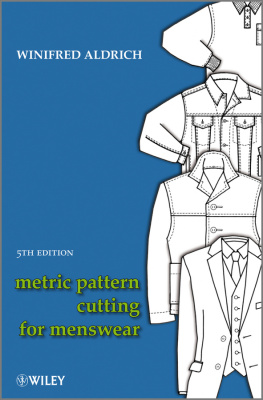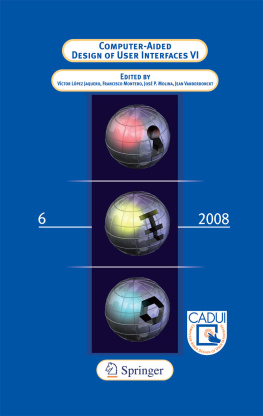
This edition first published 2011 1980, 1990, 1997, 2006 and 2011, Winifred Aldrich Registered office John Wiley & Sons Ltd, The Atrium, Southern Gate, Chichester, West Sussex, PO19 8SQ, United Kingdom Editorial office John Wiley & Sons Ltd, The Atrium, Southern Gate, Chichester, West Sussex, PO19 8SQ, United Kingdom For details of our global editorial offices, for customer services and for information about how to apply for permission to reuse the copyright material in this book please see our website at www.wiley.com. The right of Winifred Aldrich to be identified as the author of this work has been asserted in accordance with the UK Copyright, Designs and Patents Act 1988. All rights reserved. No part of this publication may be reproduced, stored in a retrieval system, or transmitted, in any form or by any means, electronic, mechanical, photocopying, recording or otherwise, except as permitted by the UK Copyright, Designs and Patents Act 1988, without the prior permission of the publisher. Wiley also publishes its books in a variety of electronic formats. Some content that appears in print may not be available in electronic books.
Designations used by companies to distinguish their products are often claimed as trademarks. All brand names and product names used in this book are trade names, service marks, trademarks or registered trademarks of their respective owners. The publisher is not associated with any product or vendor mentioned in this book. This publication is designed to provide accurate and authoritative information in regard to the subject matter covered. It is sold on the understanding that the publisher is not engaged in rendering professional services. If professional advice or other expert assistance is required, the services of a competent professional should be sought.
The views expressed in this book are those of the author and do not represent the views of the Publisher. The inclusion of images provided by Lectra SA is in no way an endorsement by Lectra SA of the contents of this book or any representations made therein. ISBN 9781405182935 A catalogue record for this book is available from the British Library. Acknowledgements I would like to thank Alec Aldrich, Ann Rodgers and Dawn Stubbs for their help with the earlier editions of this book; James Aldrich for his technical support; Stephen Chalkley for the provision of my CAD system. I would also like to thank the following companies who have supplied information and photographs for the chapter on computer aided design: assyst bullmer Ltd, UK . Browzwear International Ltd, Israel .
Dassault Systemes, France . Fast React Systems Ltd, UK . Gerber Technology, UK . GRAPHIS-software, Germany . Human Solutions, Germany . Lectra, France .
Visualretailing, The Netherlands . Finally, I would like to thank Nicole Burnett and Andrew Kennerley of John Wiley & Sons who have been responsible for the technical production of this book. To see other available titles please visit www.wiley.com. Introduction The Fifth Edition Alterations and additions in this edition have been made in order to ally it to the recent changes in the new editions of my books on women's wear and children's wear. This has meant the re-organisation of the different sections of the book. The popularity of easy fitting styles and knitted fabrics has meant that basic flat pattern cutting is used by a large sector of the retail mass-market.
Manufacturers of this type of clothing are quite different from those who specialise in formal clothing such as suits. This latter type of manufacture involves form pattern cutting, in which the body shape or the particular traditional style of the garment, dictates the cut. The introduction of colour in this book has improved the expanded CAD section, and the colour coded sections have made it easier to identify specific processes in the book. After Chapter One, The basic principles sizing using the blocks, the book is divided into five parts. Part One covers flat blocks and pattern adaptation for a wide range of garments for leisurewear, workwear and nightwear. Part Two covers the pattern cutting of the basic sleeves and collars.
These are standard processes that are used in almost all types of pattern cutting adaptations. Part Three demonstrates form pattern cutting, this method requires blocks that conform more closely to the body form and often involves complex methods of cut and construction. This section includes basic blocks for classic formal garments; suits, shirts and coats. It also demonstrates the cutting of the types of leisurewear which some manufacturers like to cut to the male body shape. Part Four includes a chapter on simple grading techniques and also a chapter on altering patterns to fit the individual figure. Part Five illustrates the latest software offered by CAD suppliers for the menswear trade.
The repetition of styles in this sector means that CAD is very applicable to the manufacture of men's clothing. CAD technology is now often integrated into design practices through product data management systems (PDM), which are often extended into product lifecycle management (PLM). Instant communication of procedures has become vital to companies designing in the UK but manufacturing overseas. The cost of CAD systems has reduced dramatically today, most clothing companies use some form of computer technology and the larger companies operate systems of considerable complexity. This edition now separates quite clearly the sections useful to students beginning to be interested in menswear design, (Parts One and Two). It also offers more advanced sections aimed at students who wish to have a career working in the more formal sector of the menswear trade.
The book still remains true to its original concept, it aims to provide a simple flexible system of pattern cutting for menswear. It offers the student an opportunity to be inventive and to produce well-cut designs. The book includes many blocks (some revised) for traditional menswear shapes, for example, a variety of suit and shirt blocks, but it still concentrates on illustrating pattern adaptation. Rigid methods of pattern construction in the menswear trade often deterred many students from continuing their interest in designing for men. The book is written for students who have mastered the basic principles of pattern cutting for women; it allows them to transfer easily to exploring designs for men and to approach the subject in a creative way. Special note seam allowances A number of colleagues have queried this book's procedure of using blocks that include seam allowances and of retaining them during pattern adaptation.
This seems to conflict with the method of working without seam allowances which is used in my two previous books written for women's wear and children's wear. There is a practical reason for this apparent lack of consistency. My books have not been written to promote some particular theoretical approach to clothing design, but to help students to become competent in the basics of pattern cutting and therefore gain the confidence to develop their own cut. Many students are bewildered when they enter industry and find that they have to work with seam allowances added to the pattern. The patterns constructed in many clothing companies are derived from previous styles and it is just not practical to work with nett patterns. I believe that it is useful for students, usually in the second or third year of their course, to have a book which demonstrates the procedure of pattern cutting with seam allowances and illustrates the problems of working in this way.
It is possible to use this book for pattern cutting without added seam allowances. The introduction of CAD into the design rooms allows a company to work with nett patterns, but in practice this rarely happens as many companies modify previous styles. When the practice of nett pattern cutting on computers approaches a universal method, then this book will be revised accordingly.










